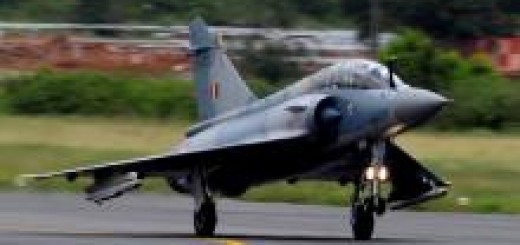Singapore Airlines A380 rolls away from airport gate after parking brake error

A Singapore Airlines Airbus A380 rolled backward and away from its parking stand at Delhi Airport in India after its crew reportedly failed to set the parking brakes correctly. No one was injured on the aircraft, which remained undamaged by the event. However, one cabin crew member suffered a minor injury because of the incident, which is now being investigated.
The incident occurred at Indira Gandhi International Airport (DEL) in New Delhi on Monday, November 25, 2024, as a Singapore Airlines Airbus A380 (registered 9V-SKR) arrived at its allocated parking stand after performing a scheduled five-hour passenger flight from Singapore’s Changi International Airport (SIN) as SQ406. According to reports, on pulling up to its parking stand and coming to an initial stop, the aircraft began to roll backward due to the crew failing to set the parking brake correctly.
Although the incident did not result in any damage to the aircraft or its passengers, one cabin crew member suffered a minor bruise as a result of the failure. After the pilots realized the aircraft was rolling backwards, they immediately set the parking brake bringing the airplane to a halt. The ground crew then pulled the A380 back onto its correct parking position at the gate with the aid of a tug.
Flightradar24Following the incident, Singapore Airlines released a statement giving further details about what had happened.
“A Singapore Airlines (SIA) Airbus A380, operating flight SQ406 from Singapore to New Delhi, experienced a rollback after parking at [Delhi Airport] on November 25, 2024. The pilot immediately applied the brakes to halt the aircraft. Once the aircraft was stationary, the pilots informed air traffic control, and ground staff safely towed the aircraft back to its designated parking bay.”
“All passengers disembarked the aircraft normally with no injuries reported. One cabin crew member suffered a minor bruise on her thigh, received medical attention, and was cleared to return to duties. SIA apologizes for any inconvenience caused by this incident. The safety of our customers and crew is always our top priority,” the statement concluded.
While the airport authorities at Delhi chose not to comment further, sources at the airport added that “The parking bay has a slight slope to ensure water flows out towards the apron during rains. After docking at the parking bay, the aircraft rolled back at 20:14 local time. Then the pilots applied the parking brake.”
Jeang Herng / ShutterstockSo far, there has not been any confirmation from any source as to whether a formal investigation will be launched by the Indian authorities or whether the pilots have been suspended following the rollback.
Aviation conventions as well as standard airline operating procedures dictate that once an aircraft has pulled onto its stand and reached its final parking position, the crew will check the hydraulic pressure of the braking system before applying the parking brake and shutting down the engines. Once the aircraft has been secured, the ground crew will then place chocks (usually triangular-shaped rubber wedges) that negate the risk of the aircraft moving should the aircraft’s parking brake fail for any reason while it is parked.
It appears from this incident, that while the aircraft’s engines were shut down, the parking brake was not set by the crew. Following the rollback, it was then deemed safer once the aircraft had come to a halt, to pull it back on to stand using a ground tug, rather than restart all four engines that would have provided enough ‘breakaway power’ to move the few feet meters back onto its stand.
RELATED
DHL Boeing 737 crash in Vilnius, Lithuania: What we know so far
The post Singapore Airlines A380 rolls away from airport gate after parking brake error appeared first on AeroTime.
A Singapore Airlines Airbus A380 rolled backward and away from its parking stand at Delhi Airport in India…
The post Singapore Airlines A380 rolls away from airport gate after parking brake error appeared first on AeroTime.





